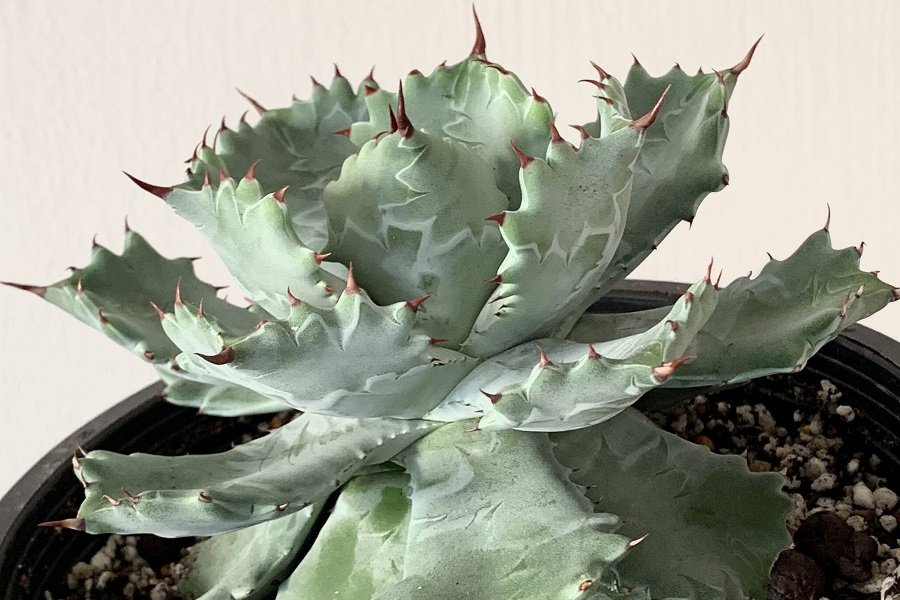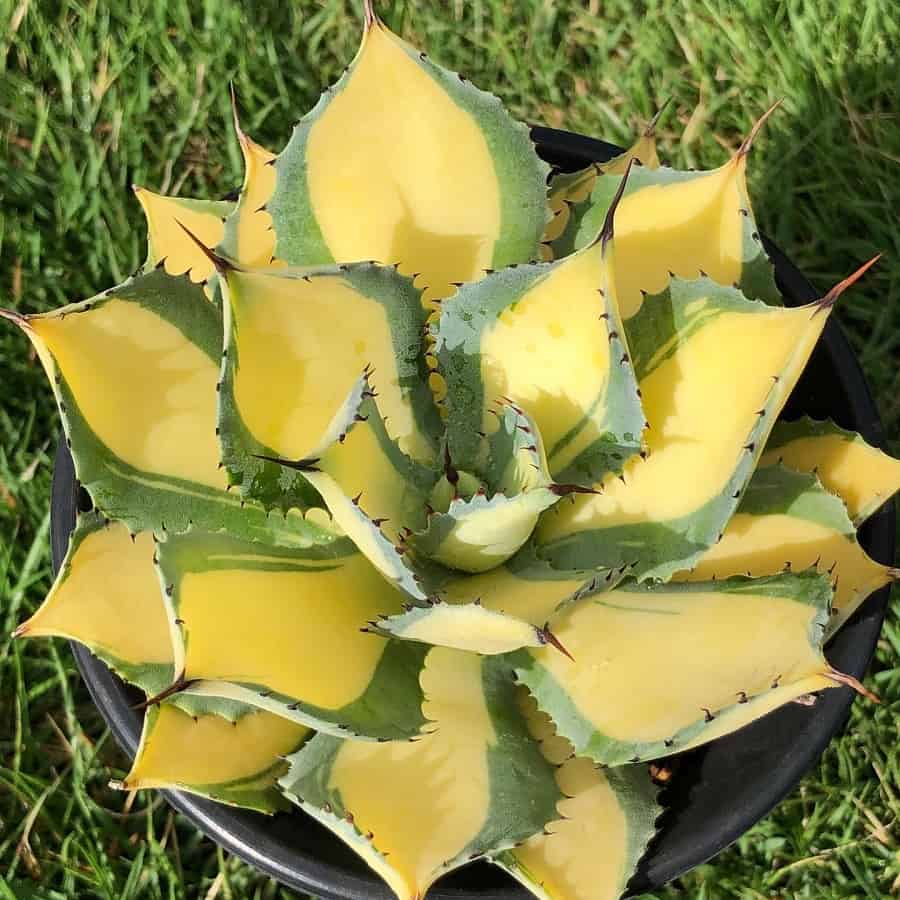Agave isthmensis: Characteristics and Care
Tired of the same old plants in your garden? Spice things up with the exotic Agave isthmensis – a true desert gem that will elevate your outdoor space to new heights! With its striking blue-green rosettes and architectural form, this succulent plant is a must-have for anyone seeking to inject a touch of intrigue and visual interest into their landscaping. But don’t just take our word for it – keep reading to uncover the captivating secrets of this horticultural treasure!

Contents
About Agave isthmensis
Native to Mexico, Agave isthmensis is a small yet striking succulent that boasts stunning rosettes of fleshy, blue-green leaves. At maturity, this compact plant reaches a height and width of approximately 1 foot, making it a perfect addition to rock gardens, containers, or as a focal point in your outdoor space.
The oval-shaped leaves are slightly concave, with pointed tips and a slightly gritty texture that adds to the plant’s rugged charm. The edges of the leaves are adorned with brownish-red teeth, complementing the overall aesthetic. In its natural habitat, Agave isthmensis produces towering flower spikes up to 7 feet tall, adding an impressive vertical element to your garden.
Related Post:
70+ Types of Agave Plants with Pictures
Variegated Forms of Agave isthmensis
If you’re seeking even more visual interest, consider the variegated forms of Agave isthmensis. The ‘Rum Runner’ variety displays beautiful yellow variegation on its leaves, while the ‘Ohi Raijin Shiro Nakafu’ boasts striking white variegation. These unique cultivars add a touch of contrast and intrigue to any outdoor space.


Care for Agave isthmensis
While Agave isthmensis is a low-maintenance plant, it does have specific care requirements to ensure its optimal growth and longevity. Follow these guidelines to keep your desert gem thriving:
Light
Like most succulents, Agave isthmensis thrives in direct sunlight. Position it in a south or southeast-facing window or, during the summer months, move it to an open balcony or veranda for maximum sun exposure. If your home lacks sufficient natural light, consider investing in a grow light to supplement the plant’s needs.
Water
Agave isthmensis is drought-tolerant and requires infrequent watering. Wait until the soil is completely dry before watering thoroughly, allowing any excess moisture to drain away. Adjust your watering schedule based on rainfall, humidity, and temperature.
Soil
Opt for a well-draining succulent soil mix to prevent waterlogging and root rot. The soil should have a mildly acidic to neutral pH, and you can add sand or perlite to improve drainage.
Fertilizer
These plants have modest nutrient needs, so fertilize sparingly with a balanced, diluted succulent fertilizer once a year during the growing season.
Temperature and Humidity
Agave isthmensis thrives in USDA hardiness zones 8-10, preferring hot and dry conditions. During dormancy in winter, protect the plant from frost by moving it indoors, and monitor humidity levels to prevent issues.

Potting and Repotting
Agave isthmensis is a slow-growing plant that rarely requires repotting. However, when repotting becomes necessary for young, actively growing plants, it’s best to do so in the spring. Choose a new container that is 1-2 inches wider in diameter than the previous one. When transplanting, take special care not to bury the rosette of the plant. Instead, position it slightly above the soil line and cover the stem with pebbles to promote quick drying and proper air circulation around the roots.
It’s crucial to avoid planting the plant too deeply, as this can lead to rot. The neck of the plant should be exposed above the soil line to prevent moisture buildup and ensure proper oxygen supply.
Pests and Problems
Agave isthmensis is generally resistant to most pests and diseases, but there are a few potential issues to be aware of:
- Agave Snout Weevil: This beetle-like pest can lay its eggs on the plant, causing it to collapse over time. Regularly inspect your plant and take appropriate measures if you notice any signs of infestation.
- Root Rot: Overwatering or poorly draining soil can lead to root rot, a fungal disease that can be fatal to your plant. Ensure proper drainage, and allow the soil to dry out completely between waterings to prevent this issue.
- Fungal Infections: Excessive humidity or moisture can promote the growth of various fungal diseases. Maintain proper air circulation around the plant and avoid overhead watering to minimize the risk of fungal problems.
How To Propagate Agave isthmensis
Propagating Agave isthmensis is a simple process that can be achieved through two methods:
Offsets or Pups:
- Gently remove the offsets or “pups” from the parent plant, ensuring the roots are intact.
- Allow the offsets to callus over for a few days in a shaded area.
- Plant the offsets in a well-draining succulent soil mix, water sparingly, and provide ample sunlight.
- Once established, you can transplant the new plants or leave them in their containers.
Seeds:
- Sow the seeds in a well-draining succulent soil mix.
- Lightly water the soil and cover the container with plastic to maintain humidity.
- Place the container in a warm area with indirect sunlight.
- After approximately a month, remove the plastic once seedlings emerge.
With its captivating beauty and low-maintenance requirements, Agave isthmensis is the perfect addition to any desert-inspired garden or succulent collection. Embrace the allure of this desert gem and watch as it transforms your outdoor space into a true oasis of tranquility and intrigue.
